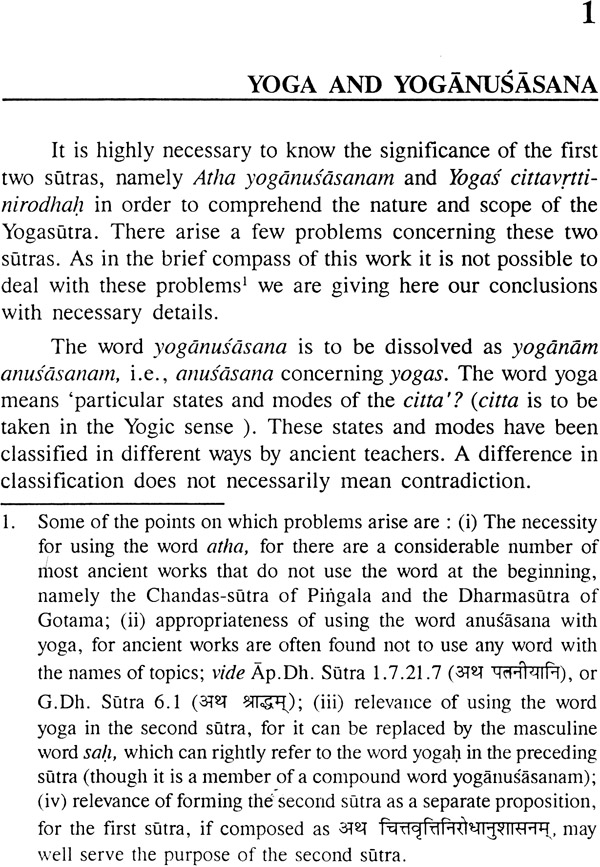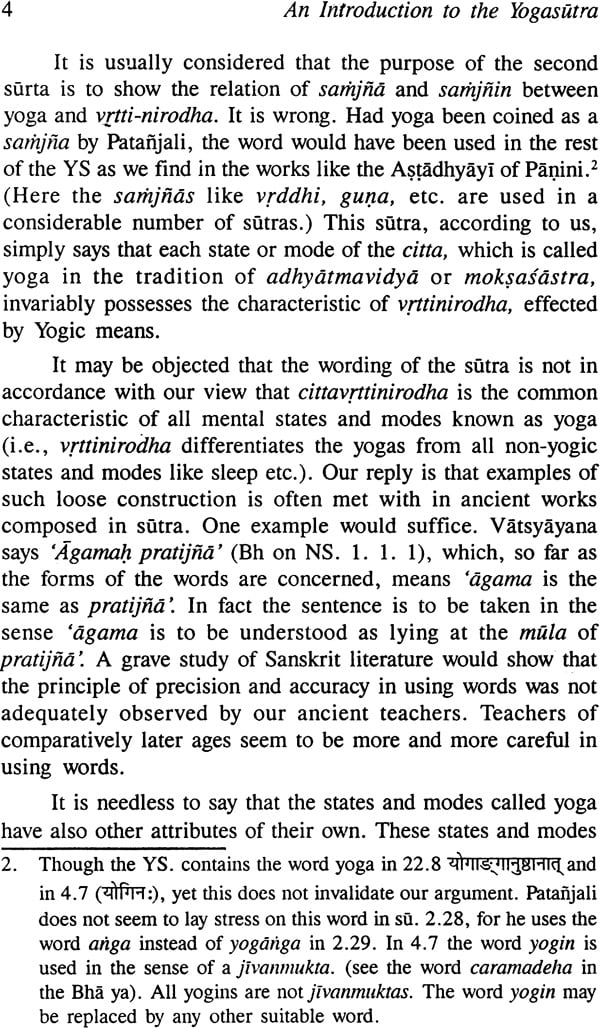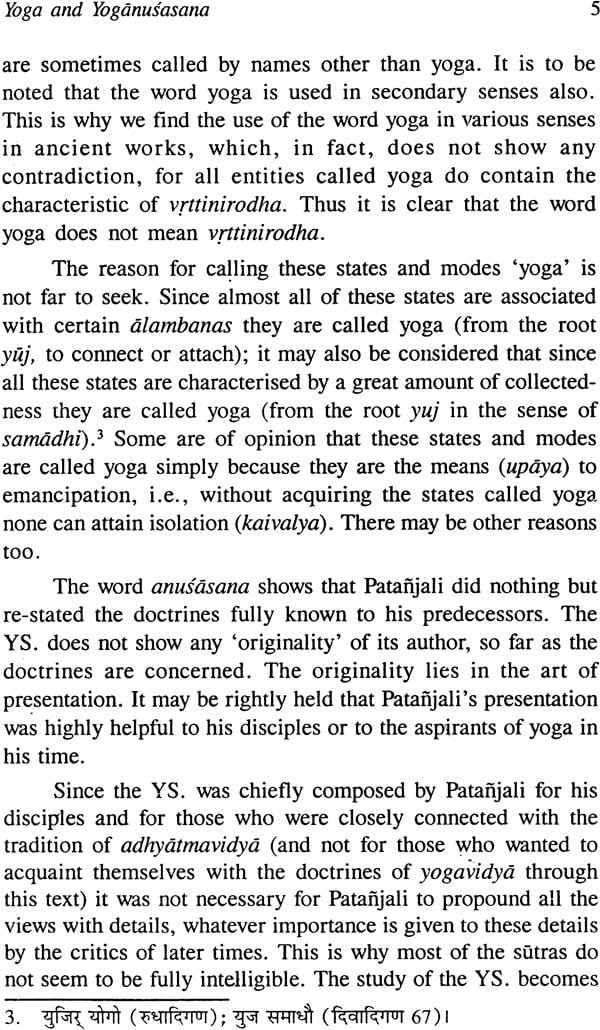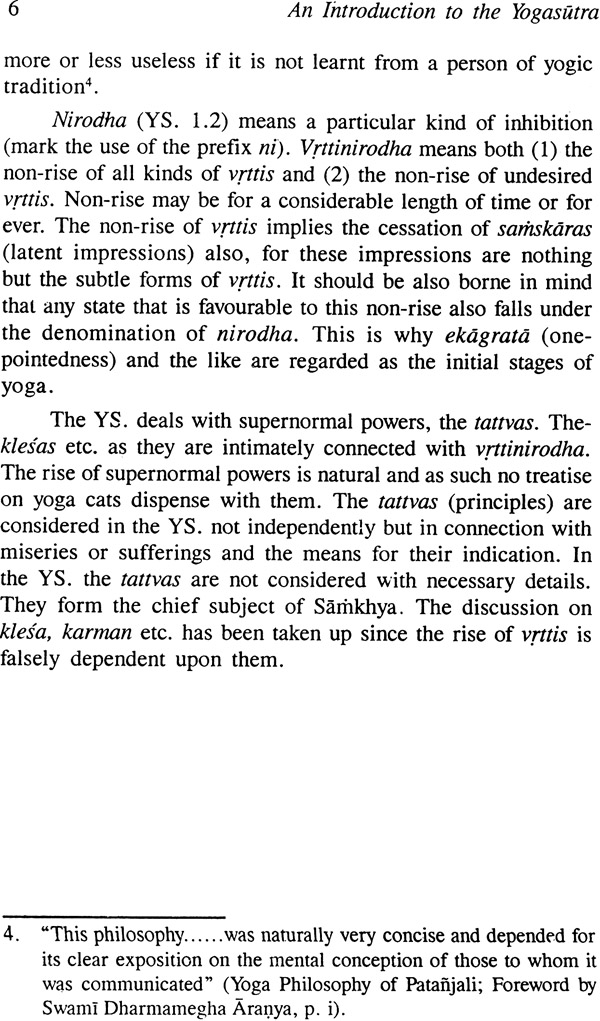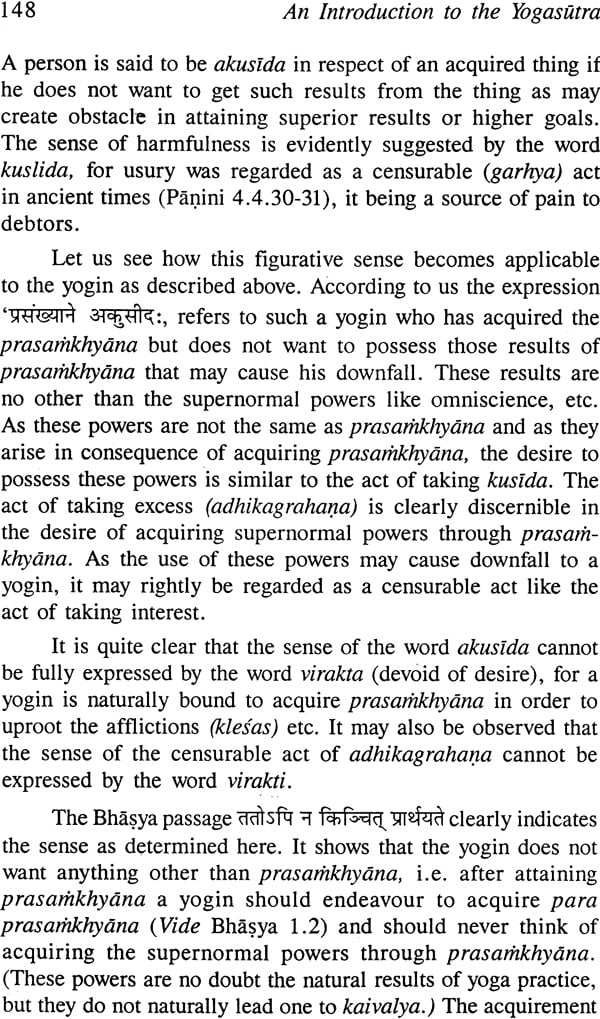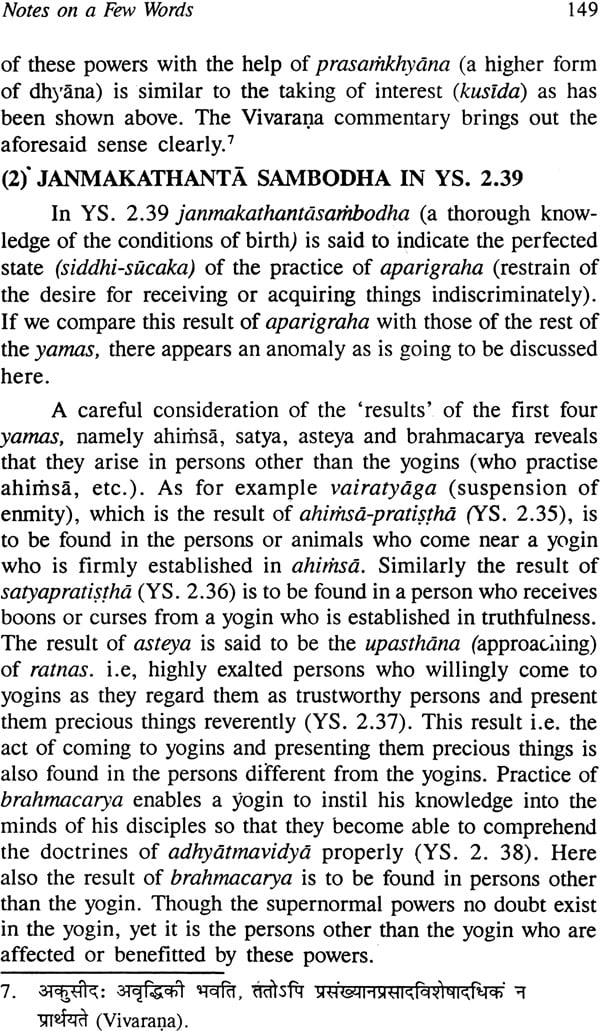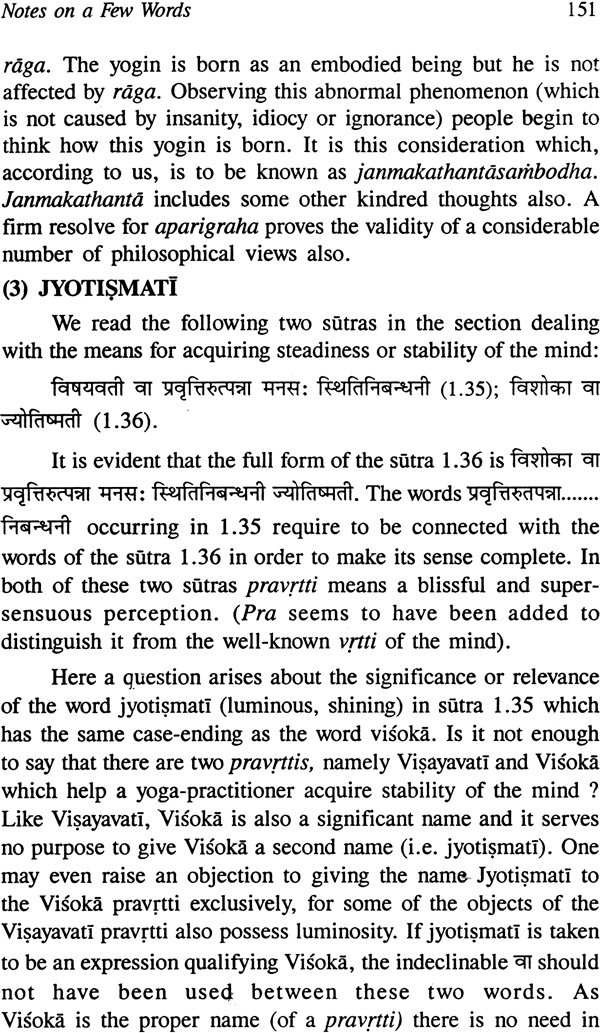
An Introduction to the Yogasutra
Book Specification
| Item Code: | NAN382 |
| Author: | Ram Shankar Bhattacharya |
| Publisher: | BHARATIYA VIDYA PRAKASHAN, VARANASI |
| Language: | English |
| Edition: | 2018 |
| ISBN: | 9788121702058 |
| Pages: | 203 |
| Cover: | Hardcover |
| Other Details | 8.5 inch X 5.5 inch |
| Weight | 350 gm |
Book Description
I am very happy to say a few words regarding this work viz. An Introduction to the Yogasutra by Dr. Ram Shankar Bhattacharya. I am happy because he not only tells us something new but also initiates a new method of research intended to awaken the scholars of Indian philosophy from their dogmatic slumber Dr. Bhattacharya is a devoted and competent scholar of Indian philosophy in general and of Sankhya and Yoga in particular. But his devotion does not stand in the way of his raising unorthodox questions and from questioning what is traditionally accepted without question. While questioning age old views he is not disrespectful; he has humility and true jijnasa but with at complaint that interpreters and commentators do not even see problems, much less solve them. Mostly they are concerned with the explanation of language but even there they do not see problems arising from the use of certain words. So, the work of Dr. Bhattacharya presents not only some fresh points for our consideration but also suggests a new method of research which may yield fruitful results if followed in other areas. While it is not possible to summarise his arguments or even to go into the details of some of them here, I may draw attention to a point by way of illustration.
At the very outset the author points out that yoganusa-sanam means yoganam anusasanam. He suggests that Patanjali's sutras are concerned not with one yoga but with all yogas. As such yogascitta-vrtti-nirodhah is not a definition of a particular yoga but a sutra giving the essential characteristic of all yogas.
Considering the composition of the Yogasutras, Dr. Bhattacharya concedes that there may have been interpolations at places and also that the order of the sutras is not always coherent. But he forcefully contests the view that the Yogasutra is by more than one author or that the 4th chapter was added later. His arguments deserve serious attention. He has something valuable to say also regarding the various readings of the Yoga-sutra. The author's observation regarding the use of certain terms (sarvaratna in II.37, punah in III. 12, varta in III. 36, and aslda in IV. 29) should interest scholars of the Yoga-sutra.
Dr. Bhattacharya does not regard the author of Yogasutra as identical with the author of Mahabhasya, much less with that of Paramarthasara. The argument is novel. How could one and the same man use the term aneka in singuar and plural both? To Dr. Bhattacharya Patanjali seems to be the name of a gotra and not of an individual. Any way, he thinks that the composition of Yogasutra belongs to a period after the Mahabharata but before Buddha. He refutes the view that it was composed after Buddha.
The views of Dr. Bhattacharya are very refreshing and stimulating. Everyone who cares to go through the book is bound to feel rewarded. One mayor may not accept his views but it is certain that one cannot ignore some of his arguments. I do not hope that the book will provoke the scholars to make further research and also to employ some new methods used in this book. Indeed I wish the same method were employed to discuss some other old texts of Indian philosophy. The book is valuable not only for its conclusions but also for its new method of investigation. I am sure it will win the appreciation that it eminently deserves.
My main object of writing the present works is two-fold: firstly to draw the attention of modern scholars to some such important points of the Yoga-sutra as will enable them to comprehend the peculiar character of the work and secondly to show the proper traditional way of studying the sutras.
I have painfully observed that absence of adequate sastric knowledge as found in most of the modern scholars is the main cause for conceiving many wrong ideas about the Yogasutra, examples of which will be found in many places of this book. It is needless to say that I have adopted the useful aspect of the process of critical research. I may further add that I have not followed the commentators blindly; nay, some of the views of the commentators have been criticized and in a few places the faulty character of their views has been shown in clearest terms.
The present work deals with the external (bahiranga) aspect of the Yoga philosophy. Since it is an 'Introduction' the treatment of some points is not exhaustive. But what has been stated that is sufficient to prove the assertions of the author. The author believes that the arguments and illustrations given here will enable the readers to study the Yogasutra in a much deeper away.
The internal aspect of the Yoga philosophy will be dealt with in my forth-coming work. It will contain essays on the viewpoint of the Yoga philosophy as well as on the entities that have been chiefly discussed in it.
In Conclusion I express deep reverence and profound gratefulness to the late Svamin Hariharananda Aranya, a great yogin of modern time, who expositions of the Yoga philosophy has been a perpetual source of light to me.
| Foreward | vii | |
| Preface | ix | |
| Abbreviations | xiii | |
| Chapter I | Yoga And Yogic Tradition | 1-29 |
| 1 | Yoga and Yoganusasana | 3 |
| 2 | The Existence of Pre-Patanjalian Yogic tradition and yoga-treatises | 7 |
| 3 | The Hiranyagarbha Sastra—A pre-Patanjalian treatise | 16 |
| 4 | Contents of the Hiranyagarbha-sastra as stated in the Ahirbudhnya-samhita | 20 |
| 5 | A wrongly conceive Pre-Patanjalian treatise (in sutra) on yoga | 26 |
| Chapter II | The Composition of The Yogasutra | 31-82 |
| 1 | Coherence in the four-fold division of the Yoga-Sutra | 33 |
| 2 | Is the fourth pada a subsequent addition? | 38 |
| 3 | Some sutras of doubtful authorship | 45 |
| 4 | Anomalous placing of some sutras | 50 |
| 5 | Is it justified to hold that the Yogasutra is a work of multiple authorship? | 54 |
| 6 | A note on the sutras in the Yogasutra | 60 |
| 7 | A note on the variant reading in the Yogasutra | 70 |
| 8 | Wrong readings of a few sutras | 76 |
| 9 | A verse of the Krsnacarita on the Yogasutra | 80 |
| Chapter III | The Author of The Yogasutra | 83-106 |
| 1 | The name Patanjali | 85 |
| 2 | The mythical life of Patanjali | 90 |
| 3 | Identity of the Yogin Patanjali with the author of the Mahabhasya—an unfounded view | 94 |
| 4 | Imaginary identity of the author of the Yogasutra with the author of certain medical treatises, of the Patamarthasara and of some other works | 98 |
| 5 | A verse of the Vakyapadiya on the identity of three Patanjalis | 101 |
| 6 | Identity of Patanjali whose statement on dravya has been quoted in the Vyasabhasya | 103 |
| Chapter IV | Date of The Yogasutra | 107-130 |
| 1 | Factors that determine the date of the Yogasutra | 109 |
| 2 | Futility of arguments advanced to prove a later date of the Yogasutra | 118 |
| 3 | Does Buddha's silence about the Yogasutra mean its non-existence at his time? | 126 |
| Chapter V | Imports of A Few Words In The Yogasutra | 131-169 |
| 1 | Wrong explanations and renderings of some words in the Yogasutra | 133 |
| 2 | Varta a wrongly conceived word in the Yogasutra | 141 |
| 3 | Notes on a few rods (kusida, janmakathanta, jyotismati, sarvaratna, punch, alasya, vikse - pasahabhu, dirgha-suksma, va) | 146 |
| Appendices | 170-179 | |
| I | Views and passages of the Hiranyagarbha-yoga - sastra as recorded in authoritative works | 170 |
| II | Compilation of Puranic passages similar to the sutras in the Yogasutra | 173 |
